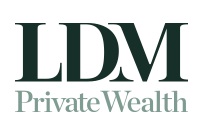With the advent of Spring selling season, market activity ramped up in the three months to November. Buyer and seller confidence was buoyant, and choice improved significantly in the major capitals.
Although the flow of new listings hitting the market has risen, the demand for housing remained strong and home prices continued to move higher over the quarter.
As of the end of October, the index was only half a percent below the historic high recorded in April last year and is expected to reach a new record high midway through November.
Slowing growth
Although housing values are consistently rising across most capital cities, there’s been a clear slowdown in the quarterly pace of growth trend. The three months preceding 2023 saw capital city home values rise by 4.5%. Since then, the growth trend has drifted back to 2.3% over the three months to November.
CoreLogic’s research director, Tim Lawless, stated recently “The slower rate of appreciation can probably be attributed to a combination of higher advertised stock levels alongside stretched affordability. With an acceleration in the flow of new listings coming onto the market, it’s unlikely buyer demand will be able to keep pace as we move through spring amid high interest rates and low sentiment.”
The RBA’s Cup Day rate rise may well put a dampener on prices and exacerbate this softening growth trend.
The outlook
While the November interest rate rise may slow Australia’s property market rebound, its unlikely to stop prices rising, according to PropTrack senior economist Eleanor Creagh. “This additional increase in interest rates may slow the current pace of home price growth but is unlikely to deter these gains, with strong population growth, tight rental markets and a housing shortfall fuelling further price rises.i
“Ten months of price rises that have gathered traction across markets alongside more positive market conditions are also likely to be drawing buyers off the sidelines”, she added.
Dwelling values over the quarter
Over the quarter all capitals recorded an increase, with Sydney leading the way. Regional markets continue to lag their capital city counterparts.
Sydney
Sydney’s monthly pace of growth continues to slow, with the harbour city’s property prices increasing by 2.5% over the quarter, compared to 4.5% growth over the previous quarter. The rental yield is holding relatively steady at 3.0%.
Brisbane
Prices in Brisbane have increased by 3.8% over the quarter, erasing the previous -8.9% drop in values to reach a new record high in October. Investors can take note of the 4.0% gross rental yield in October.
Melbourne
The Victorian capital continued to grow with values increasing by 1.2% over the quarter, compared to 2.0% growth last quarter. The rental yield is stable at 3.4%.
Canberra
The growth rate of housing values in Canberra remained unchanged from the previous quarter at 0.7%. The nation’s capital has a current gross rental return of 3.9%.
Perth
Perth recorded the greatest increase across the capital of 4.6% over the quarter. This represents an increase on the previous quarter’s results of 3.2%. Investors will be happy with the country’s second highest gross rental return (behind Darwin) at 4.7%.
|
City |
Houses |
Units |
Dwellings |
|
Melbourne |
$937,736 |
$615,022 |
$778,541 |
|
Sydney |
$1.396 million |
$832,222 |
$1.121 million |
|
Brisbane |
$860,465 |
$545,355 |
$770,575 |
|
Canberra |
$961,329 |
$589,348 |
$842,722 |
|
Perth |
$660,069 |
$450,905 |
$631,195 |
Note: all figures in the city snapshots are sourced from: CoreLogic’s national Home Value Index (November 2023)



